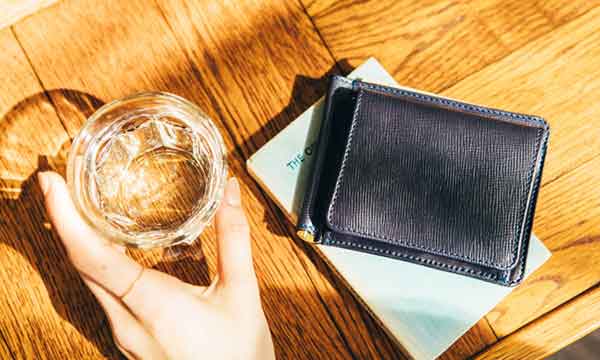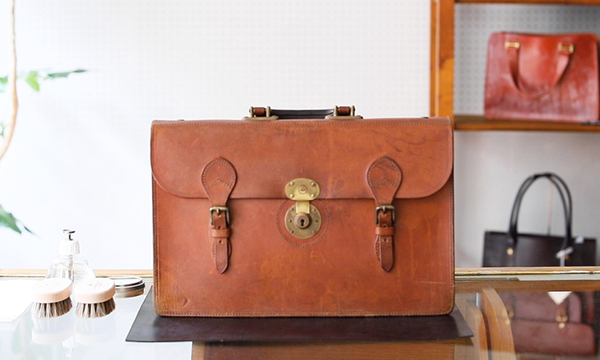The heritage of UK craftsmanship hidden within briefcases
Naoyuki Komatsu, one of Japan’s foremost bag craftsmen,
explains the artistry and philosophy visible
in British bag making as
he takes apart an entire briefcase.
Briefcases made with bridle leather are suffused with character like that of an English gentleman. In order to fully explore the secrets of this classic bag that has been such a perennial favourite worldwide, we asked Mr Naoyuki Komatsu of Ortus, a craftsman renowned both in Japan and abroad for his amazing fully-handmade bags, to disassemble it while providing commentary on the many points of Glenroyal’s particularity that become newly evident from each piece.
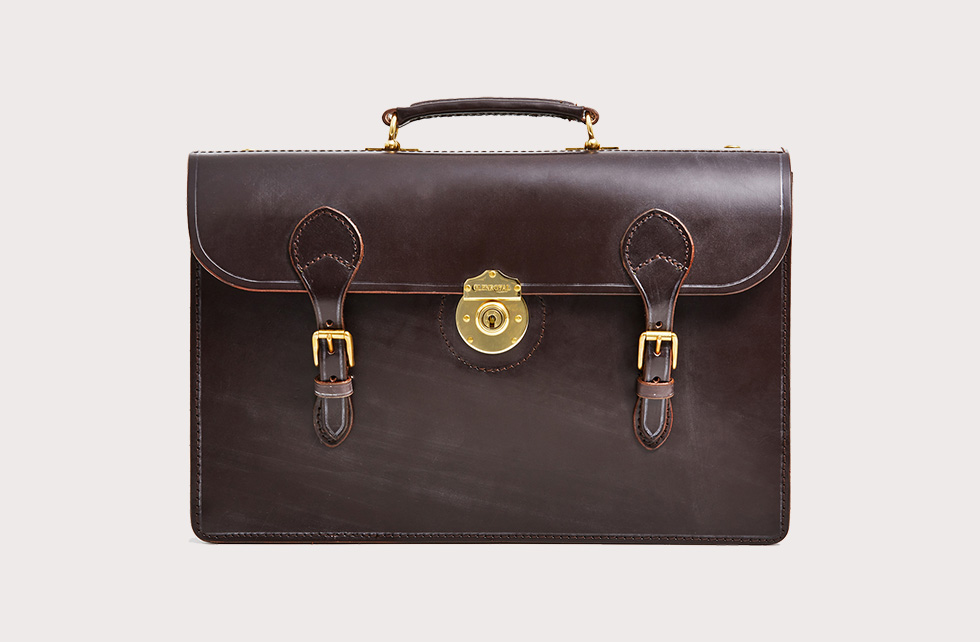
Disassembly of a British bag brought back from the archives:
the Two-compartment briefcase
Glenroyal’s flapover briefcases are made entirely of thick and sturdy bridle leather in the classic UK tradition. They combine a bearing of gentle, dignified confidence with robust durability, making them ideal choices for inspiring trustworthiness in business settings. They also take on a one-of-a-kind gloss the more they are put to use, creating the added appeal of a bag that ages into one unique to you alone. They are true masterpieces that can even be passed on to younger generations as family heirlooms.
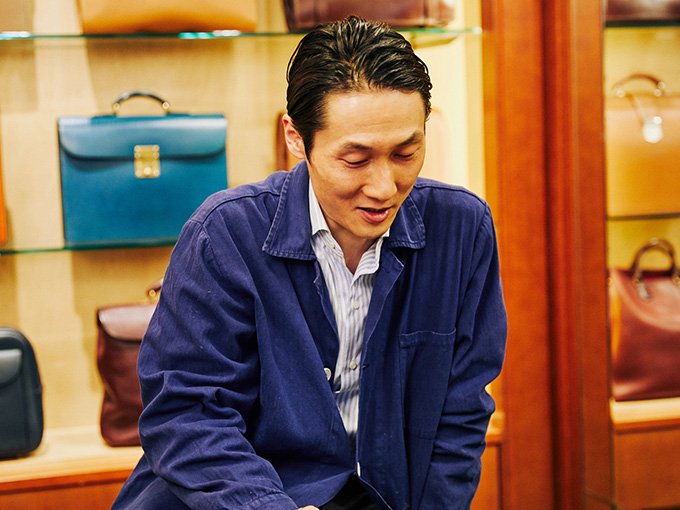
Naoyuki Komatsu, head of Ortus
After completing studies at a fashion school, Naoyuki Komatsu went to work for an apparel brand. Having the opportunity to work with leather sparked an interest in bags, which in turn led to eight years of studying bespoke bag making at Fugee. Komatsu then opened Clematis Ginza alongside shoe craftsman Keitaro Takano in 2008. He later went independent in 2012 and started Ortus. Nakamatsu is renowned for his fully-handmade bags that are both stylish and durable enough for extended use.
<Part Names>
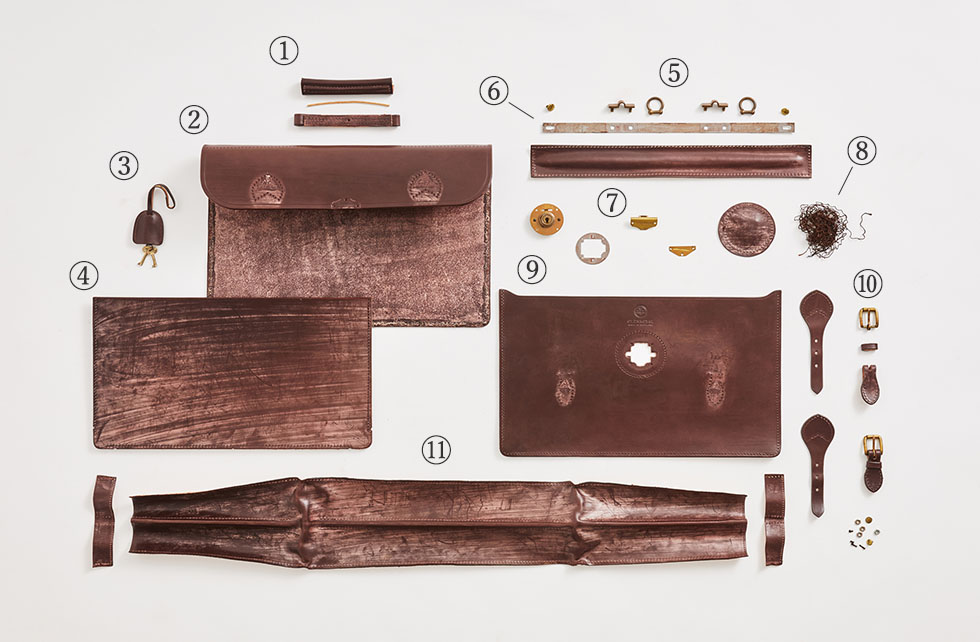
- 1. Handle
- The part of the bag a person grips. It consists of a core wrapped in a single piece of leather, with the upper portion puffed out to create a ridge and then sewn in a straight line.
- 2. Cover
- The lid that goes over the opening of the bag. It serves as the face of the briefcase, and is sometimes also referred to as the flap.
- 3. Keys
- The keys that keep the briefcase’s contents safe. Like the lock, they are made of brass in order to maintain their beauty.
- 4. Partition
- Used to divide the interior of the bag into two compartments. Though not visible from the outside, it is made of the same material as the body of the briefcase.
- 5. Handle Rings
- Metal rings used to attach the leather handle to the body. They are also made of brass in order to enhance the appearance of the briefcase.
- 6. Iron Strip
- A thin strip of iron attached to the backside of the handle rings.
- 7. Lock
- The metal fixture opened and closed with the keys. The pieces of the lock are attached to both the front and back of the cover.
- 8. Thread
- The thread used to sew the briefcase together. Strong thread is used to avoid fraying and prevent the bag from tearing open.
- 9. Front
- The front of the body of the briefcase. A crucial piece in determining the overall look of the bag.
- 10. Straps
- The parts that connect the cover and front. Made of the same material as the body.
- 11. Side & Bottom Wedges
- The parts that connect the front and back of the body. In two-compartment briefcases the wedges fold.
━What are some of the main characteristics of this briefcase?
It’s really all tied to the quality of the leather. A single piece of good bridle leather has been used generously, with thought given to the overall balance and due diligence given to upholding the standards of time-honoured manufacturing methods. You’ll see what I mean if you look at back of the leather inside the briefcase, but the front of the body that serves as the face of the bag uses the portion of the leather with minute fibres. This was a deliberate choice made in order to ensure that the leather would age nicely without any untoward wrinkles. They also used nice leather for the wedge. Glenroyal is well-versed in making bags according to the longstanding tradition, which can be seen in the way they know what parts need extra attention. Wedges need to bend, which also means there is added risk of them breaking. So, one must be extremely careful about things like easing the leather into the shape of the wedge using a damp sponge. I’m pretty sure that a craftsman with both experience and skill oversaw the making of this briefcase. Another thing to note is that bridle leather is very expensive, so it’s also quite important that the person making have a good understanding of which portions are useful so they can make the cuts efficiently. They need to be able to assess the quality of the leather and decide what parts of the bag it will be used for so that nothing goes to waste when they cut it.
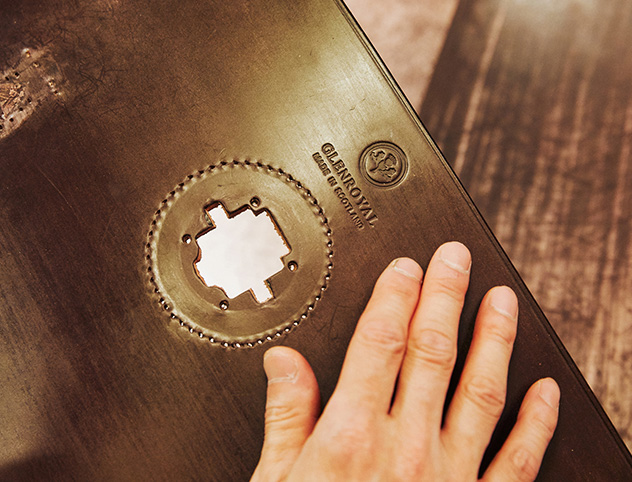

While Glenroyal briefcases are quite simple in design, the brand’s long historical backbone gives them a thorough understanding of which parts of the bag are most likely to come apart and thus where they need to apply extra diligence. They run the sewing machine slowly for the locations that will be receiving the most stress, reinforcing them by inserting stay tape on the back of the leather. While the thread is made of synthetic fibres, they have chosen a thick and quite durable variety that is strong against friction so that it won’t fray. It’s very apparent that all of the materials were chosen and assembled with the premise of extended use in mind. You could say that Glenroyal’s venerable history in the bag-making history led to them to this solution.
━Has anything changed about your impression of Glenroyal prior to disassembling the briefcase?
Honestly, everything is pretty much as I imagined it would be. This Glenroyal briefcase is designed in such a way that every little detail is readily apparent, with nothing hidden. Other bags might have things like lining affixed to the back of the leather that make it impossible to see how exactly it was made without taking it apart. No such unnecessary steps have been taken here, though, so in that sense I can feel Glenroyal’s confidence in how the briefcase was made. It’s made entirely of bridle leather, with almost no secondary materials as well. When one considers how they used bridle leather to highlight the fun of seeing how leather ages, it becomes clear that keeping the design simple like this was brand’s historical conclusion. Applying unnecessary padding and the like can lead to issues such as odd points of friction, and might also detract from the bridle leather’s innate charm.
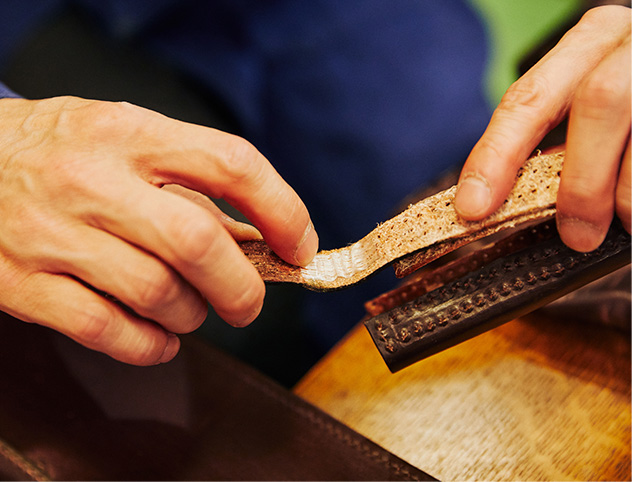
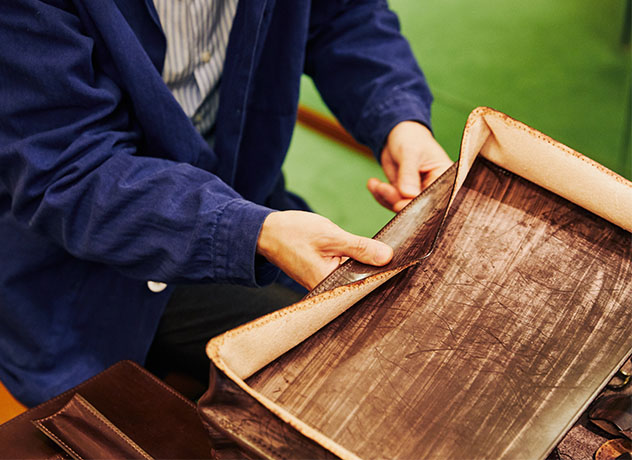
━What kind of maintenance would a briefcase like this need?
At first you’re going to have distinct bloom that is unique to bridle leather. You can get rid of it with brushing, or you can use the case as-is and it will fall away on its own. Quality bridle leather gains a sheen with continued use, and also grows softer as the fibres intertwined within it loosen. Bridle leather doesn’t require much upkeep beyond cleaning it if it gets dirty or occasionally applying a bit of cream. Generally, if you brush the leather, the oil and wax within it will work in nicely, resulting in a good appearance the more the briefcase is put to use. The stitching will also naturally begin to wear in and take on character if you apply cream to it alongside the leather.
━What constitutes a good bag in your mind?
I place emphasis on how beautiful and appealing the bag is when viewed as a whole. It’s easy to focus on things like intricate needlework, specialist production or how the welts are done, but I don’t believe you can truly say a bag is good if its finished form doesn’t look sharp. Everyone has their own preferences, though, so it’s best to just choose what you like based on the nature of each brand. Glenroyal is a perfect fit for those who want to enjoy British craftsmanship and the aging of bridle leather. All of the metal parts are brass, and the lock is a sturdy one of high quality. Being particular about these parts too is important in giving the bag personality. The lock is from a veteran manufacturer in the UK that holds a British Royal Warrant, so you aren’t going to find any of its like here in Japan. I order the locks I use from the UK as well.
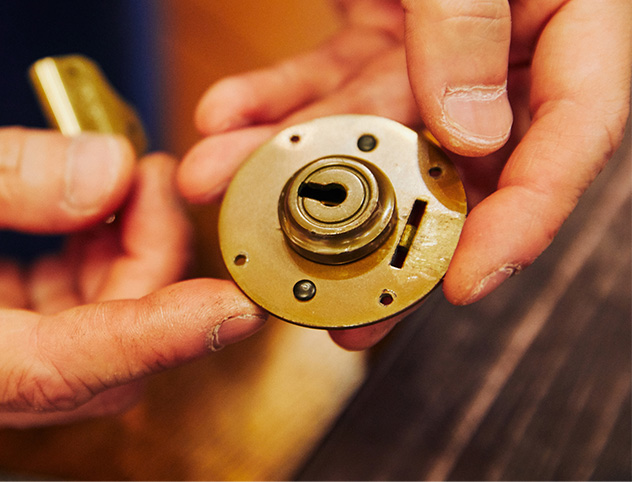
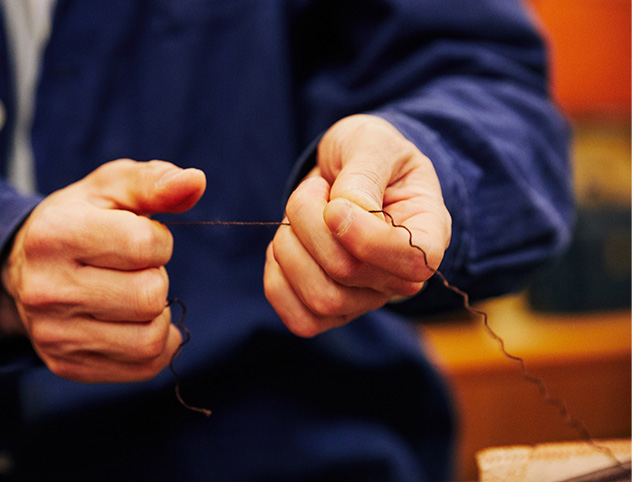
━What sort of bag would you create if you were using bridle leather?
If I were to make a bag out of bridle leather, I don’t think I would do much different from what you see with Glenroyal’s designs. Firstly, I would make the bag from a single sheet of leather in order to take full advantage of its texture. However, I do all my stitching by hand and end up applying a lot of Japanese intricacies, so someone from the UK might not think my handiwork looked very British. Take for example the leather and materials used for the handle. Though I might use the same things, Glenroyal bulks up the inner core with braided cord, whereas I would probably go a bit further and use leather with shavings added to make the bag easier to carry.
That isn’t orthodox British craftsmanship, though. There aren’t many brands that make these classic style briefcases with flaps anymore, which is precisely why they are in demand with certain people. I have some customers who come to me wanting bridle leather briefcases, especially with orders from overseas. Taking apart this Glenroyal briefcase allowed me to really get another feel for the level of workmanship the UK has cultivated over its long history. This is a great briefcase for appreciating that UK spirit as it ages.
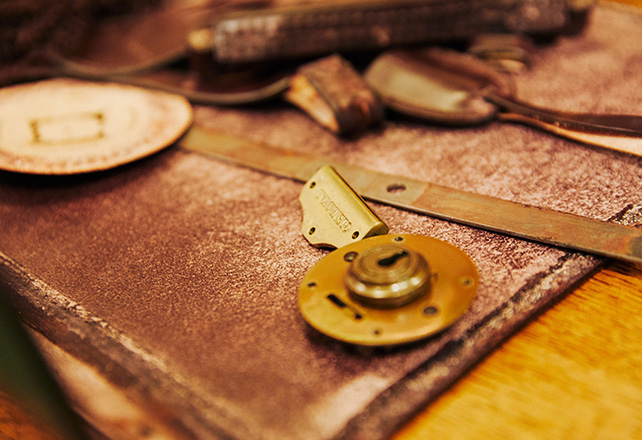
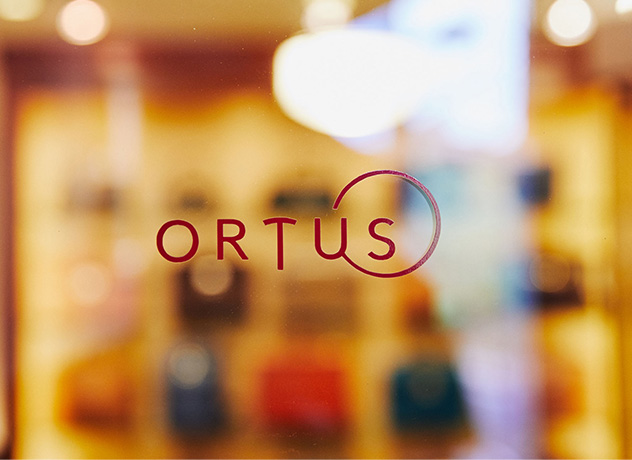
photoTRYOUT text Yasuhiro Okuyama
Ortus

The store name originates in the Latin term for “sunrise” or “east”, with the concept being an Eastern or Japanese evolution of bags born in the West. Ortus opened in 2012 and it is developed in two patterns: “full order”, tailored from scratch, and “original order”, which determines details from samples. Komatsu now receives patrons from not only Japan, but abroad as well due to word having spread about his wonderful handwork.
- Address: 2F, Parkside Ginza
1-24-5, Ginza, Chuo-ku, Tokyo - Telephone: +81-3-5579-9210
- Hours: 11:00 – 18:30
- Closed: Mondays
- http://www.ortus-bag.com
photoTRYOUT text Yasuhiro Okuyama

